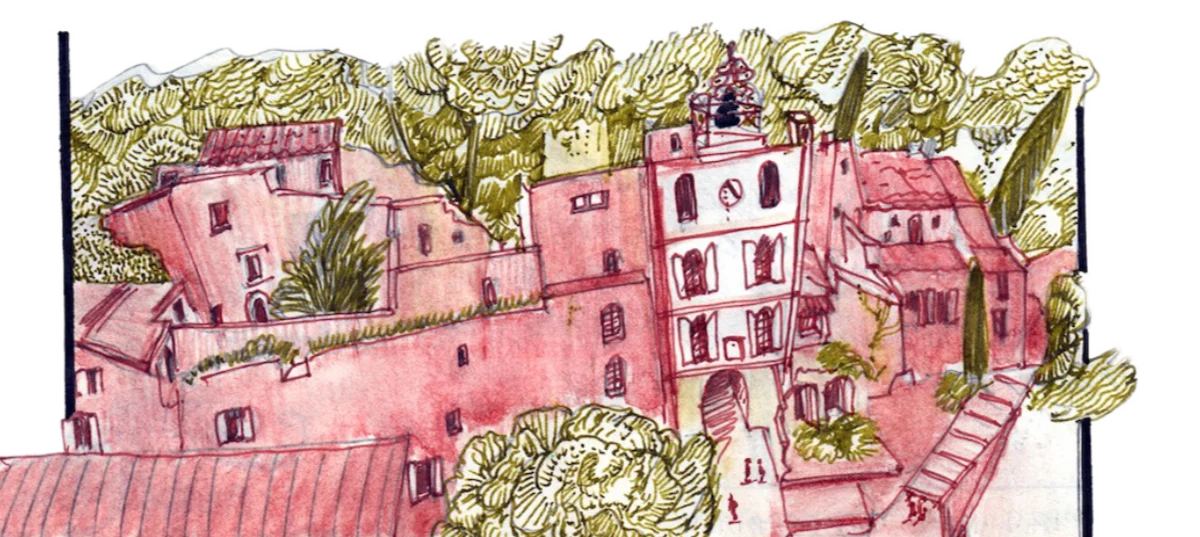Oppède-le-Vieux, our residency of the past twenty years, is perched on a rocky outcrop in the Luberon region of Provence. It’s known for its medieval architecture, rich history and vegetation. But also its desolation and silence. The name says it all, ‘vieux’ (old in French), and I wondered what the oldest house in the village would ultimately be. So we planned a Sunday walk up the hill via the medieval callade of Chemin de Tombereau.


On our way
At the end of the steep Chemin de Tombereau, the village looms up between the sumptuous vegetation. Partly cultivated (olive and vineyards) partly rough and untouched. Opposite the forest behind the village, the houses seem minuscule. It is dead quiet, and you have the impression of approaching a ghost village.
One already notable structure is the Maison Gabrielli. An ensemble of four houses built around a courtyard during the 13th and 14th centuries. Additional constructions were added in the 16th century. What immediately stands out is the asymmetrical facade division and the elaborate window openings with sculpted frames typical of the Renaissance period.

Maison Gabrielli
In the writings of Jean-Paul Clébert (1926-2011), resident of Oppède-le-Vieux from 1968 until his death, I could find this piece of information:
“There were a few wealthy families, notably the Gabrielli, who owned the “castle,” which isn’t a castle but an estate along the ramparts. This family has been around since the Middle Ages. They were officials at the Papal Court in Avignon and had chosen Oppède as their second home. Originally from a village in Tuscany, Gubbio (hence their name Gabrielli of Gubbio), a village that resembles the north face of Oppède. Once settled here, they bought a few houses in the surrounding area …”
Note: At the time Clébert missed the fact that Gubbio is situated in the region of Umbria, not Tuscany. There is indeed a Via Gabrielli in that village referring to the family.
But, that would not be the oldest structure …


The above sketches in my zibaldone show the position of the so-called oldest house in the village and some interesting details. Click to enlarge.
Old, older, oldest
It is generally assumed that a detached house a little further on was already there in the 11th or 12th century. Roughly the same period, when the well-preserved Notre-Dame d’Alidon church was build, dating back to either the 10th or 11th century.
Specific details about the oldest constructions in Oppède-le-Vieux are limited. At the back of the house you stand in front of the immense wall of the castle. Even higher you can spot the remains of the medieval fortress.

The castle, once owned by the Counts of Toulouse and later the papacy in the 13th century, was abandoned around the end of the 17th century. Over time, inhabitants relocated to the more accessible plains (Les Poulivets or in short Oppède), leading to the village’s gradual desertion.
To Oppède-le-Vieux in spring, a short video





Leave a Reply